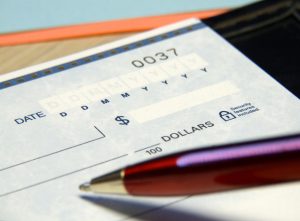There is a fine line between not having enough money and having too much money and estimating expansion costs effectively will save you lots of sleepless nights later
By: Phoenix Lee/
An important part of growth is the budget, or the allocation of funds to those activities that will bring about growth. There is a fine line between not having enough money and having too much money. The disadvantages of borrowing too much are (1) the increased interest costs and (2) exceeding equity limitations.
 The disadvantage of not borrowing enough is getting halfway through a project and discovering there are not enough funds available to complete it. The problem usually associated with expansion is poorly estimating expansion costs.
The disadvantage of not borrowing enough is getting halfway through a project and discovering there are not enough funds available to complete it. The problem usually associated with expansion is poorly estimating expansion costs.
Table of Contents
Estimating expansion costs well includes understanding equipment costs
New equipment purchases often accompany an expansion. Contact several equipment suppliers to discuss your needs, the capabilities of specific equipment and prices. Other related expenses associated with equipment should be investigated, such as delivery, hookups to utilities, installation costs and unusual operating expenses.
Leasing should be considered as an alternative to purchasing equipment. Usually leases can be obtained from the company that sells the equipment, but there are also leasing companies and leasing divisions at banks. The disadvantage to leasing is that the rate usually is higher than the interest rate for purchasing equipment. The major advantage of a lease, however, is the low down payment or equity position required to initiate the lease.
Most leases place the responsibility for repairing equipment with the lessor. This can reduce the risk of having to incur repair expenses at a time when your cash flow is tight and repair costs difficult to cover. Be sure you understand all provisions of the lease agreement. Many companies offer lease-to-purchase plans that enable you to eventually purchase the equipment. This can be a viable option.
Delivery of equipment, whether new or leased, should be carefully timed with completion of other construction activities so the equipment is not sitting idle.
Knowing your inventory costs means you understand about estimating expansion costs
Inventory is the product, in its various stages of completion, that is finally sold to generate revenue and receivables. It is an important aspect of a company’s operating cycle because it is a window into the company, i.e., it will tell how well the company produces the goods and services it sells. Inventory should always be valued at the lower cost or market value to ensure that its value is not overstated on the balance sheet.
The level of inventory in an expanding business should be easy to determine because it is based on a comparison of past inventory levels to past sales. The inventory turnover ratio is the cost of goods sold divided by the average inventory and is the ratio that is often used when a growth phase is initiated. The cost of new inventory should be considered because it might be higher than the cost of existing inventory.
It is usually assumed in an expansion process that the existing inventory can be easily liquidated and, therefore, the inventory turnover ratio will increase. However, the opposite could occur if you attempt to increase sales by offering an increased inventory. Also, it is usually assumed that, as inventory increases, carrying costs will decrease because of the additional economies of scale gained with the additional inventory. Again, this should be carefully determined
by investigating actual carrying costs.
Inventory is important to both new and expanding business because, before it is sold and becomes a receivable, it represents invested cash. When separated into its parts (raw materials, work in process and finished goods), the inventory cycle will identify lags and structural difficulties a company has in the production process.
You should also understand about accounts receivable
Like inventory, future accounts receivable are projected from the existing receivables on the balance sheet and are normally in the same proportion to future sales as current receivables are to current sales. For example, past sales of $100,000 and accounts receivable of $5,000 represent a relationship of 5 percent of accounts receivable to sales. If growth is projected to $500,000, then projected accounts receivable at 5 percent would be $25,000.
It is possible for accounts receivable to increase out of proportion to the existing figure. For example, accounts receivable could easily be a higher proportion if, in the process of increasing sales, relationships with slower paying customers were established.
To illustrate this, if actual accounts receivable average $5,000 when sales are at $100,000, a variance of 1 percent would result in accounts receivable of $6,000, a difference of only $1,000. However, at an operating level of $500,000 sales, a 1 percent negative variance translates into a $5,000 difference. If this is not planned for, it would be more difficult for you to come up with $5,000 than it would be to come up with $1,000.
Expenses and estimating expansion costs
The last and most difficult cost category to project is the additional cash needed to support increased activity. The best method for calculating this amount is to use a cash flow projection. To better project cashflow, distribute the cash income over the months when the sales growth should occur (cash expenses are calculated the same way) and then determine the expenses needed to generate the desired increase in income.
During a business expansion, cash balances will normally decrease for a while, and then show a gain. This gain will occur only if the business is profitable. It can be difficult to predict when a growth in cash flow should begin. As a general rule, it should be within the first operating year, preferably by the third or fourth month; however, this may vary.
Seasonal fluctuations in cash receipts and cash expenditures should be built into the cash flow projection. This will indicate those months cash should be reserved to cover excess expenses when cash out exceeds cash in. If the business is profitable and some portion of profit is reinvested in the business, then the cash flow projection should account for this as well. The impact of income tax on cash flow also should be included.
For each level of sales volume, a certain residual amount of cash should be retained in the business. For example, if sales have been $50,000 per year, the cash balance carried might be $1,000; if sales are at $500,000 per year, the cash amount carried might be $10,000. These amounts are somewhat arbitrary and depend on the nature of the business; however, each increase does not have to be proportional to sales. Instead, the residual cash amount should be based on the cash flow projection for operating the business.
After determining cash needs, a certain amount could be budgeted to cover unexpected contingent liabilities or to compensate for slow turnover in receivables. Select this figure carefully because investors may be skeptical if it is too large. It is better to estimate a little higher on some of the account categories that have definite needs, thus reducing the need for a large contingency amount.
Estimating expansion costs when you are considering the purchase of another business
At times expansion can be accomplished by purchasing another business. In this situation, the expansion costs equal the costs of purchasing the business plus the amount of money needed for improvements and operating expenses. Many industries have standard rules that should be considered on how to determine the purchase price of a business.







